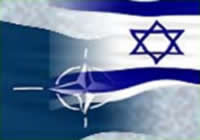A Preventable Massacre
By SETH ANZISKA
Published: September 16, 2012
ON the night of Sept. 16, 1982, the Israeli military allowed a right-wing Lebanese militia to enter two Palestinian refugee camps in Beirut. In the ensuing three-day rampage, the militia, linked to the Maronite Christian Phalange Party, raped, killed and dismembered at least 800 civilians, while Israeli flares illuminated the camps’ narrow and darkened alleyways. Nearly all of the dead were women, children and elderly men.
The massacre lasted for three days (16, 17 and 18 of September 1982), approximately 3500-8000 persons, including children, infants, women and elderly were slaughtered and murdered in his horrific and gruesome massacre perpetrated by the Israeli army and its allied criminal militia.
Back then, around 20.000 refugees lived in the refugee camp that was supposed, as any other camp, to receive international protection.
Israeli soldiers, led by Sharon and Chief of Staff, Rafael Etan, made sure their forces are surrounding the refugee camp, isolated it from its surrounding, and allowed the Phalanges to invade it and murder thousands of innocent refugees using white weapons.
The Israeli army also fired hundreds of flares during the massacres in night hours to enable the murderers to commit their war crime. The army claimed that it was searching for nearly 1500 Palestinian freedom fighters who allegedly were in the camp.
But the fighters were somewhere else, joining battle fronts countering the Israeli aggression, and most of those left in the camp, left to face their horrific end, were elderly women and children.
Israel wanted to avenge its defeat after engaging in a three-month battle and siege that ended by international guarantees, to protect the civilians the Palestinian resistance left Beirut as part of an agreement that assured the protection of civilians.
Israel wanted to send a message to the Palestinian refugees; it wanted to continue its aggression and invasion into Lebanon in 1982. more
Israel’s illegal cluster bombs
Published Sep 21, 2009 9:33 PM
A vast reconstruction effort, spearheaded by Hezbollah, the Lebanese resistance movement, is rebuilding some 300 villages and towns in Lebanon devastated by the Israeli bombing of 2006. Yet these mountainous regions have not yet restored much of the small family farming plots so crucial to the economy.
Why? Because many of these areas remain mined and dangerous.
In an attempt to permanently destroy southern Lebanon’s farming-based economy, Israel dropped more than a million cluster bombs there in the last 72 hours of the war, after the cease-fire had been negotiated. By the time the fighting stopped, 26 percent of southern Lebanon’s cultivatable land was covered with unexploded bombs and 34 million square meters (13 square miles) were contaminated, according to the United Nations. The deadly bombs were everywhere—hanging from trees, in orange and banana fields—making it impossible to collect harvests or to plow the land for new planting.
NATO and Israel: Instruments of America’s Wars in the Middle East
NATO’s Role in the Middle East War Theater
The North Atlantic Treaty Organization (NATO) is the iron fist of America, Britain, France, and Germany. These four Western nations are the pillars of NATO.
In the post-Cold War era, NATO has become an instrument in support of Anglo-American and Franco-German foreign and security objectives. Although intra-NATO differences exist, the interests of the U.S., the E.U. and Israel — which since 2005 has held a de facto membership in NATO — are interlocked within the Atlantic military alliance.
Two areas in the Middle East have been militarized by foreign powers: the Persian Gulf and the Levant.
In this regard, there have been two distinct phases of militarization in the Middle East since the late-1970s, the first being distinctly Anglo-American, going back to the Iraq-Iran War and the later being a unified NATO endeavour involving France and Germany as key players.



No comments:
Post a Comment